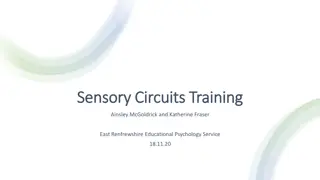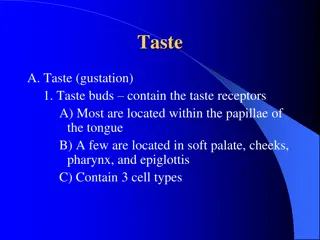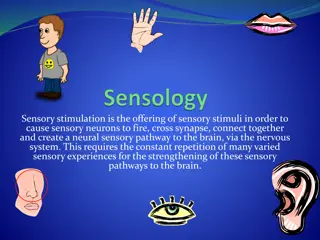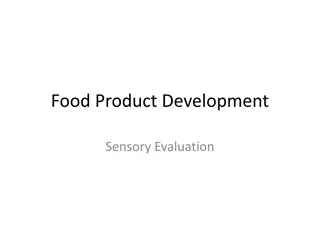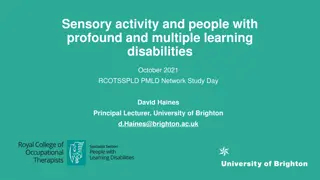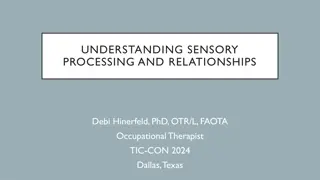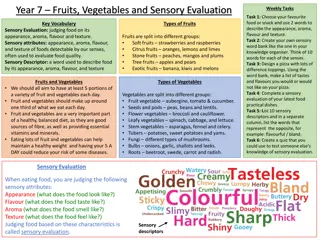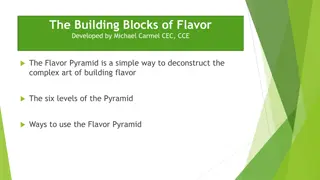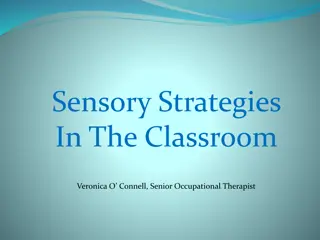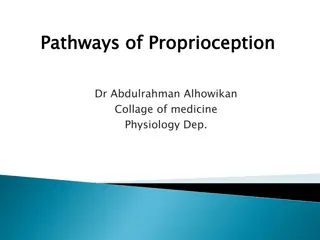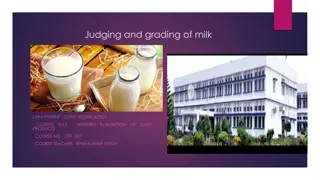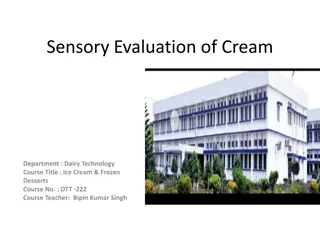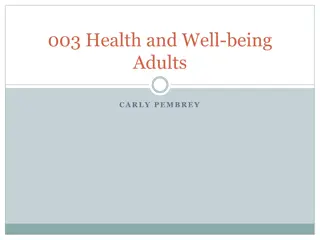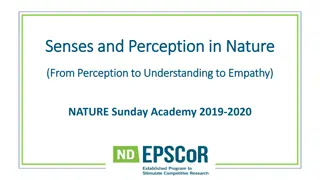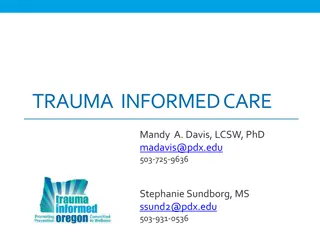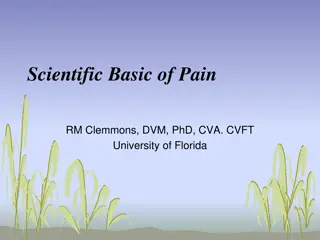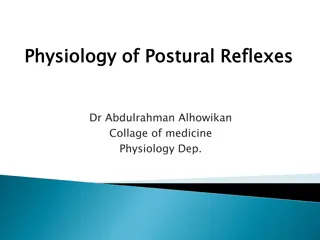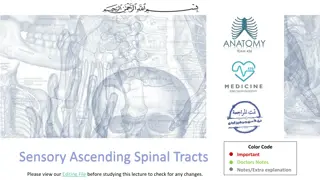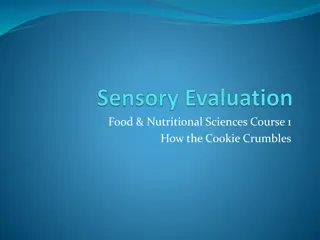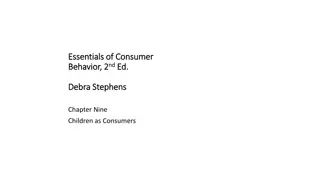Understanding the Physiology of Taste in Sensory and Aroma Marketing
Research on the gustatory system has made significant advancements recently, defining taste as a complex mix of olfactory, gustatory, and nervous stimuli. The sense of taste, closely tied to smell, is crucial for perceiving the chemicals in our food. The physiology of taste explores how our tongues identify different flavors and the intricate system of taste receptors in taste buds. Factors like age can affect taste sensitivity, but with proper training, subjective taste perceptions can be refined. This knowledge is vital for sensory and aroma marketing strategies.
Download Presentation

Please find below an Image/Link to download the presentation.
The content on the website is provided AS IS for your information and personal use only. It may not be sold, licensed, or shared on other websites without obtaining consent from the author. Download presentation by click this link. If you encounter any issues during the download, it is possible that the publisher has removed the file from their server.
E N D
Presentation Transcript
Sensory and Aroma Marketing The sense of taste JANA RYBANSK - UDMILA NAGYOV
Introduction Research on gustatory system achieved enormous progress over the last decade. Taste, according to the International Organization for Standardization (ISO, 2008), is defined as the complex olfactory, gustatory, and nervous stimulus that is perceived during tasting of substances. Taste is the sense that allows us to perceive the chemicals dissolved in water or saliva, and it is very closely related to the sense of smell. Smell is actually the most essential sense, and not only from a marketing perspective.
Physiology of taste Consumers can identify all tastes anywhere in the tongue, but the sensitivity to each taste in each part of the tongue is different. Phantosmia (phantom smell) When you perceive a flavour that does not exist in food: The brain is an extremely complex computational tool, containing about 100 billion neurons, but nevertheless it is possible to convince the brain to think that it perceives a flavour (such as, salty or sweet), even when that ingredient is not included in a specific food at all.
Physiology of taste Taste stimulus is the substance dissolved in saliva. Threshold values for basic tastes are very low; our tongue can recognize the sweetness of one teaspoon of sugar dissolved in 10 litres of water. Gustatory system consists of taste receptors located on the upper surface of tongue, the relevant parts of the brain and neural pathways. The resulting taste is not affected only by the composition of food, but also by its temperature, consistency, appearance, and above all the scent.
Physiology of taste Taste receptors of the tongue are present in the taste buds. From the morphological point of view, taste buds can be divided into 4 groups: The first group consists of dark cells. The second group consists of light cells, responsible for recognition of bitter, sweet, and umami tastes, that are able to release adenosine triphosphate (ATP) at a non-vesicular level. In the third group, there are transitional cells that mediate the transfer of sour taste and form the neural synapses in the taste buds. The fourth group consists of round progenitor cells for the previous three groups, within the basal compartment of taste buds.
Physiology of taste Several studies have shown that the sense of taste changes with the age. One of the first tested differences is that sensitivity to taste stimulus decreases with ageing. Taste is a very specific sense and although initially can be subjective after proper training of the subjects, this subjectivity can be eliminated. Nowadays, sensory analysis of foods can be carried out. Taste stimuli are often associated with other sensory stimuli, especially visual and olfactory. Sight plays a significant role in taste perception. Foods, such as chocolate, cheese, pasties, hamburgers, fries, etc., belong to most habit forming foods in the world, and their addictiveness is lagging behind perhaps only after alcohol and cigarettes. Mother s food choices during pregnancy influence what child likes to eat after birth.
Taste determinants and how taste determines buying behaviour As previously discussed, taste preferences and perception might be very subjective. It is known that each person distinguishes several flavours. The consumer preference is affected by all the factors that are influencing consumer behaviour, such as cultural, social, personal, psychological, and situational factors Many researchers have devoted decades to taste research, and there are many different approaches. Like samples directly in stores, taste in connection with branding, etc.
Taste determinants and how taste determines buying behaviour The perception of a particular taste is impacted by all other senses. Identifying the taste of colourless and odourless food, that we could not even touch, would be an almost impossible task. Taste research is inextricably linked with smell, because these two senses are very difficult to separate. Molecules of flavour are entering the nasal cavity together with air, where millions of receptors help to carry the information to the brain. The sight is incredibly important for the sense of taste. In order to identify the taste of food, consumers need also the visual information.
Additives Quite often, consumers face the fact that lower quality products (less healthy foods) are the most delicious. This is mainly due to the additives used in those foods; they are often cheaper compared to traditional raw materials but have significant effect on the taste of food. Most of the food is now just purchased in supermarkets. That is one of the main reasons for the use of various additives; the main reason to use these chemicals is that such foods are required to last longer and have a longer shelf life.
Taste determinants and how taste determines buying behaviour From a marketing point of view, taste research is getting not too much attention as compared to other senses. At this time, consumers are very interested in healthy lifestyle, health, beauty and harmony of body and soul. Thus, food products related to these facts are getting more and more popular in the market (especially organic foods). Tasting products directly in stores is becoming a popular tool for sales promotion, and it is also used to determine whether customers like the taste of products. It has a few problems though: The first problem was that customers often used offered samples to fill their eating needs. The second problem was the lack of hygiene because customers took the food with bare hands. The third problem is when the consumer test the food and he do not like it, he will definitely not buy the product.
Combination of taste and smell Taste is not just a matter of taste cells, because sensations that are evoked by the food play an important role in the smell. Our perception also affects the memory. Smell is often featured as part of the taste without knowing why. Unlike the smell, the taste is a very thorough sense, which is based on eight nerves and taste disorders are very rare. A frequent cause of this decline of this ability is the loss of a large number of teeth, smoking, certain medications and chemotherapy in the treatment of cancer
Taste the success or does quality matter? Taste is a sense that can work wonders, can attract, and win customers for life. It was found that if additional information is provided to consumers, they will evaluate differently the products and their taste perception and preference is different than if no information is provided and they only taste the products. In 1964, Allison and Uhl conducted an experiment in which they asked consumers (who regularly drunk beer at least 3 times a week) to blind taste several types of beer. They found out that consumers were unable to distinguish their favourite brand. However, if the brands were identified, the taste of the consumer favourite beer brand was rated more positively
Taste the success or does quality matter? Studies dealing with blind taste tests and the relation between taste and brand also revealed that if the consumer does not know the brands, then it is willing to try a number of them, and most likely will choose the one with the highest quality. If the consumer knows a brand, it is willing to try less of the other brands and it will most likely choose the most famous brand, although its quality might not be the highest one. Who does not like fast food? Fast-food chains have usually very well developed marketing strategies and use the latest knowledge of marketing and largely sensory marketing. Their products appear more appealing mostly because of the combination of multiple sensory stimuli. The actual taste of food is intensified be the store scent and brightly coloured pictures showing nicely arranged dishes and happy people
Summary In this presentation we discussed the following topics: Physiology of taste and smell Taste determinants How taste determinates buying behaviour Combination of taste and smell Taste the success or does quality matter?


